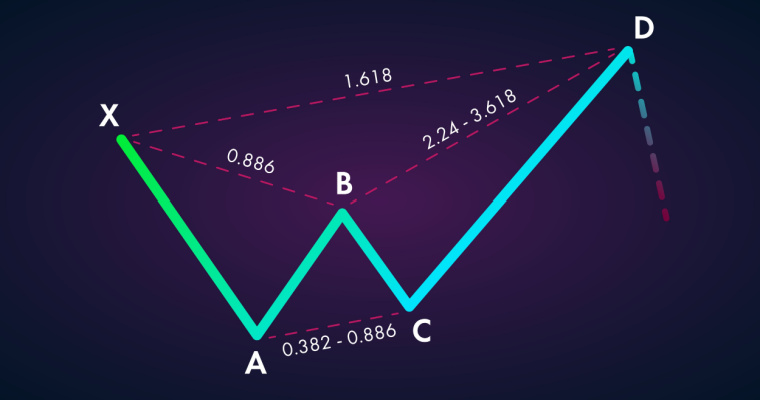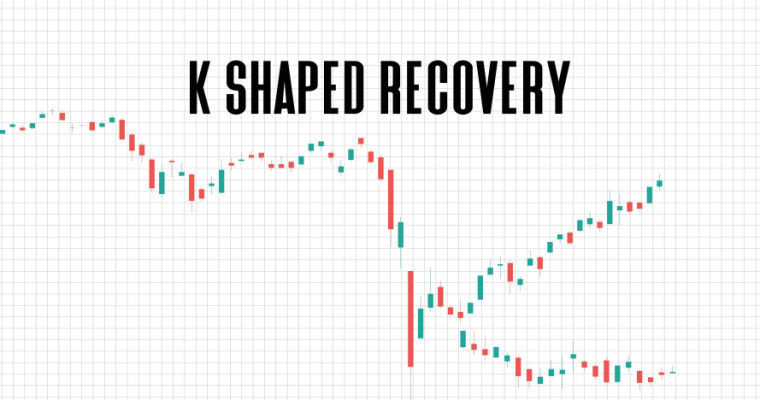What Are Outstanding Shares – Its Calculation and How Do They Affect Investors

Outstanding shares are the total number of shares issued by the company except the ones held in the company treasury. It includes all the shares held by public, institutional investors and company insiders and are used to determine the market capitalisation of the company. The formula for determining the outstanding shares is the number of shares outstanding x current share price.
This blog helps understand how outstanding shares work, their importance, types, formula and calculation and how they affect investors. Read on!
How Do Outstanding Shares Work?
Essentially outstanding shares comprise all the shares owned by institutional investors, retail investors, and restricted shares held by insiders. They are often confused with float shares but there is a difference.
Float shares of the company are the ones that are available for trading to the public. In other words, it doesn’t include shares that are closely held or restricted stock. Insider shares that are limited from trading for a short time, such as the IPO lock-in period, are referred to as restricted stock. Shares that are closely held are those that are owned by key shareholders, insiders, and employees.
Importance of Outstanding Shares
If you are analyzing a company’s stock, it is important to take into consideration the outstanding shares. They are key to many financial calculations. For instance, the stock price reflects how investors assess the present worth of future earnings per share. Therefore, the more shares that are outstanding, the more the profit is split.
Outstanding shares also help in understanding the market capitalisation or the value of the business.
Types of Shares Outstanding
Shares outstanding can be classified into two categories: basic shares outstanding and fully diluted shares outstanding.
Basic share outstanding includes the present number of shares that are readily available on the secondary market. Furthermore, the calculation of fully diluted shares outstanding accounts for diluting securities like convertibles (warrants, preferred shares, etc.).Fully diluted outstanding shares can roughly give you how many outstanding shares there could potentially exist.
Warrants grant the stock bearer the right to purchase additional shares of outstanding stock from the company’s treasury. Stocks outstanding rise as warrants are exercised, while Treasury stock counts fall. Consider the scenario when a company issues 100 warrants. The company will now have to sell 100 shares from its treasury to the warrant holders if all of these warrants are exercised.
Outstanding Shares Formula
The formula for calculating outstanding shares is as follows:
Outstanding Shares = Issued Stock – Treasury Stock
The number of shares outstanding is equal to the total number of issued stocks minus the number of stocks held in the company’s treasury.
How to Calculate Outstanding Shares?
To understand the calculation of outstanding shares, let us take an example of a company that has recently issued 1000 shares. Out of these, 600 shares are issued as floating shares for the public, and 200 shares are issued as restricted shares to the company insiders. The remaining 200 shares are in the company’s treasury.
Now the total number of outstanding shares in this scenario is 800. This 800 is divided into 600 (shares held by the public) + 200 (restricted shares held by company insiders).
Weighted Average Shares Outstanding
The number of shares outstanding is an important factor in determining financial metrics like earnings per share and because it fluctuates over time, the weighted average of outstanding shares is frequently substituted for it in some equations.
Let us understand how the mechanism of weighted average shares outstanding work with the help of an example. A firm with 1,000 outstanding stocks decides to perform a stock split and increases the number of outstanding stocks to 2,000. The company registers its earnings as Rs.2,000. We can calculate earnings per share (P/E) for the overall time using the formula:
Net Income-Dividends on Preferred Shares/Outstanding shares
In this case, it would be, 2,000/(1000 – 2000)
The problem arises in deciding among the two alternative outstanding share values—1,000 or 2,000—that should be used in the calculation. Financial computations can more precisely be performed by using the weighted average of outstanding shares, which is calculated as follows:
(Outstanding shares x Reporting period 1) + (Outstanding shares x Reporting period 2)
In this example, if the reporting periods were of 6 months each, the weighted average of shares outstanding would be 1500. By revisiting the E/P calculation, the 2000/1500 weighted average of shares outstanding will be Rs.1.33 earnings per share.
Why Do Outstanding Shares Keep Changing?
The number of outstanding shares increases when the firm decides to issue additional shares. Similarly, the number of outstanding shares of a company can also decrease when the company decides to buy back its shares. Therefore, the number of outstanding shares of a company is not static and is bound to change over time.
There are other scenarios as well where the shares outstanding keep changing. For example: if the company announces a reverse stock split where the number of outstanding shares decreases but the share price increases. In this case, the market capitalisation is unchanged.
Where to Find the Number of Shares Outstanding?
You can find the number of shares outstanding by looking at the company’s balance sheet. They are reflected as capital stock. Additionally, publicly listed corporations are required to disclose the total shares outstanding and issued shares, and they typically do so in the investor relations parts of their websites or on the websites of regional stock exchanges.
How Do Outstanding Shares Affect Investors?
Outstanding shares have a huge impact on other financial parameters and fluctuation in the ratios can affect investors. Outstanding shares have a direct relationship with the P/E ratio i.e., the price-to-earnings ratio. An increase in outstanding shares will increase the P/E ratio. Likewise, a decrease in outstanding shares will decrease the P/E ratio.
A corporation with a bigger number of outstanding shares is more stable overall because there is greater price stability and the fact that it takes many more shares to be traded to significantly change the stock price. In contrast, a stock with a significantly lower number of outstanding shares would be more susceptible to price manipulation since it would take a significantly smaller number of shares to alter the price of the stock.
Final Word
As a potential investor, it is important to understand the meaning and functionality of outstanding shares as they can affect various financial parameters and also show the company’s liquidity.
It is advisable to carefully go through the company’s financials before putting your money in! You can always access the details on the financial statements of the company or use online stock screener tools.
Apart from shares, you can also invest in low-cost funds. Navi Mutual Fund enables you to invest in a wide variety of index funds along with the golden opportunity to invest in international markets with an SIP of just Rs.10! Download the Navi app now!
FAQs
Ans: Floating stock explicitly refers to shares that are open for trading, whereas shares outstanding pertain to company stock, which includes restricted shares and institutional shares. We can calculate floating stock by subtracting restricted shares from the number of outstanding shares.
Ans: Outstanding shares mean the volume of a company’s shares that are exchanged on the secondary market and are hence accessible to investors. All restricted shares held by the company’s executives and insiders (senior personnel) are included in the outstanding shares, along with the equity held by institutional investors like mutual funds, and pension funds.
Ans: Outstanding shares are distinct from treasury shares, which are kept by the corporation and cannot be traded on the open market. The total number of issued shares is made up of both treasury shares and outstanding shares.
Ans: A stock split generally occurs when a company wants to lower the price of its shares. When this happens, a company’s number of outstanding shares rises and its level of liquidity rises. A reverse stock split, on the other hand, takes place when a company wants to raise the price of its shares. A company frequently takes this action to satisfy listing requirements, which routinely call for a minimum share price.
Ans: Authorized shares are the maximum number of shares a firm is allowed to issue. The outstanding shares might be equal to or less than the authorized shares. For example, A company might have the authorization to issue 10 million shares but it has issued only 9 million shares.
Want to put your savings into action and kick-start your investment journey 💸 But don’t have time to do research? Invest now with Navi Nifty 50 Index Fund, sit back, and earn from the top 50 companies.
Disclaimer: Mutual Fund investments are subject to market risks, read all scheme-related documents carefully.
This article has been prepared on the basis of internal data, publicly available information and other sources believed to be reliable. The information contained in this article is for general purposes only and not a complete disclosure of every material fact. It should not be construed as investment advice to any party. The article does not warrant the completeness or accuracy of the information and disclaims all liabilities, losses and damages arising out of the use of this information. Readers shall be fully liable/responsible for any decision taken on the basis of this article.

Customer’s Feedback
No comments found.Illiquid Stocks Guide: Definition, Examples, and its Working
Illiquid stocks are part of a long-term investment strategy that is appropriate for investors who a... Read More »What is Shooting Star Candlestick Pattern in Trading?
The shooting star candlestick pattern is considered to be a bearish reversal candlestick ... Read More »What is VWAP Indicator and How to Use it for Trading
The VWAP indicator shows the volume-weighted average market price of a particular stock. You can us... Read More »What is Price Action Trading: Its Strategy, Stop Loss and Profit Targets
Price action trading is a methodology in which the trader solely relies on analysing a security’s... Read More »What is Buy the Dip Strategy in Trading – Working and Example
‘Buy the dip’ is one of the most common phrases in the stock market. It is sort of a go-t... Read More »What is the Black Scholes Model – Formula, Calculation and Assumptions
Among the important concepts in modern financial theory, the Black Scholes model, developed in 1973... Read More »What is Iron Condor and What are its Strategies?
Iron Condor is an options trading strategy that involves four options with the same expiration date... Read More »What is Harmonic Pattern and How Does it Help in Trading?
Harmonic patterns are one of the most efficient and effective trading patterns. Although they are m... Read More »What is a Contract Note and Why is it Important?
Contract note is a legal document containing the details of every stockbroker's trade on a stock ex... Read More »What is K-shaped Recovery: Indication, Example and
Economies go through multiple phases in business cycles. One such phase is a recession which is mar... Read More »Guide to Book Building – Its Types, Benefits and Process
Initial public offerings (IPOs) are priced as specified by their underwriters. The process by which... Read More »Support and Resistance in Trading: Working, Strategies, Uses and Example
Support and resistance are two of the most significant and practical concepts in technical analysis... Read More »Top 10 Chit Fund Schemes in India in 2023
Chit funds are one of the most popular return-generating saving schemes in India. It is a financial... Read More »10 Best Gold ETFs in India to Invest in April 2023
Gold ETFs or Gold Exchange Traded Funds are passively managed funds that track the price of physica... Read More »10 Best Demat Accounts in India for Beginners in 2023
Creation of Demat accounts revolutionised the way trades were conducted at the stock exchanges. It... Read More »20 Best Index Funds to Invest in India in April 2023
What is an Index Fund? An index fund is a type of mutual fund or exchange-traded fund (ETF) that... Read More »Best Arbitrage Mutual Funds to Invest in India in April 2023
Arbitrage funds are hybrid mutual fund schemes that aim to make low-risk profits by buying and sell... Read More »10 Best SIP Plans in India to Invest in April 2023
What is SIP? SIP or Systematic Investment Plan is a method of investing a fixed amount in ... Read More »10 Best Corporate Bond Funds in India to Invest in April 2023
Corporate bond funds are debt funds that invest at least 80% of the investment corpus in companies ... Read More »10 Best Bank for Savings Account in India [Highest Interest Rate 2023]
Savings account is a type of financial instrument offered by several banks. It lets you safely depo... Read More »






























